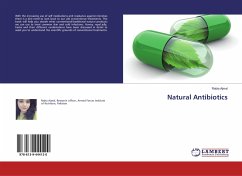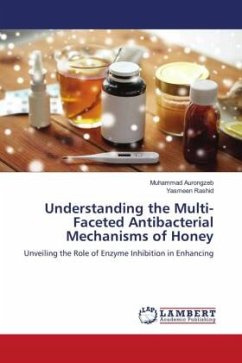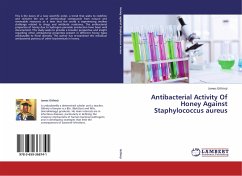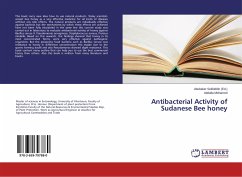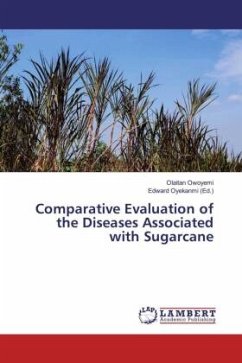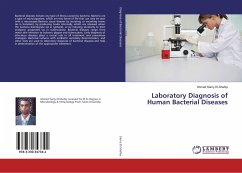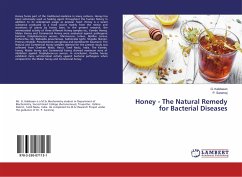
Honey - The Natural Remedy for Bacterial Diseases
Versandkostenfrei!
Versandfertig in 6-10 Tagen
24,99 €
inkl. MwSt.

PAYBACK Punkte
12 °P sammeln!
Honey forms part of the traditional medicine in many cultures. Honey has been extensively used as healing agent throughout the human history in addition to its widespread usage as popular food. Honey is a sweet substance produced as a food source mainly from the nectar and secretions of plants by honey bees. In the present research, the antimicrobial activity of three different Honey samples viz., Kombu Honey, Malan Honey and Commercial Honey were evaluated against pathogenic bacteria (Staphylococcus aureus, Micrococcus luteus, Bacillus cereus, Escherichia coli, Klebsiella pneumoniae, Salmonel...
Honey forms part of the traditional medicine in many cultures. Honey has been extensively used as healing agent throughout the human history in addition to its widespread usage as popular food. Honey is a sweet substance produced as a food source mainly from the nectar and secretions of plants by honey bees. In the present research, the antimicrobial activity of three different Honey samples viz., Kombu Honey, Malan Honey and Commercial Honey were evaluated against pathogenic bacteria (Staphylococcus aureus, Micrococcus luteus, Bacillus cereus, Escherichia coli, Klebsiella pneumoniae, Salmonella typhi, Shigella flexneri, Proteus mirabilis, Pseudomonas aeruginosa and Acetobacter baumani). The Natural and Commercial honey samples selected for the present study was collected from Chetheri Malai, Harur, Tamil Nadu, India. The Kombu honey, Malan honey and Commercial honey showed maximum zone of inhibition against Staphylococcus aureus. In conclusion, Kombu honey exhibited more antimicrobial activity against bacterial pathogens when compared to the Malan honey and Commercial honey.





